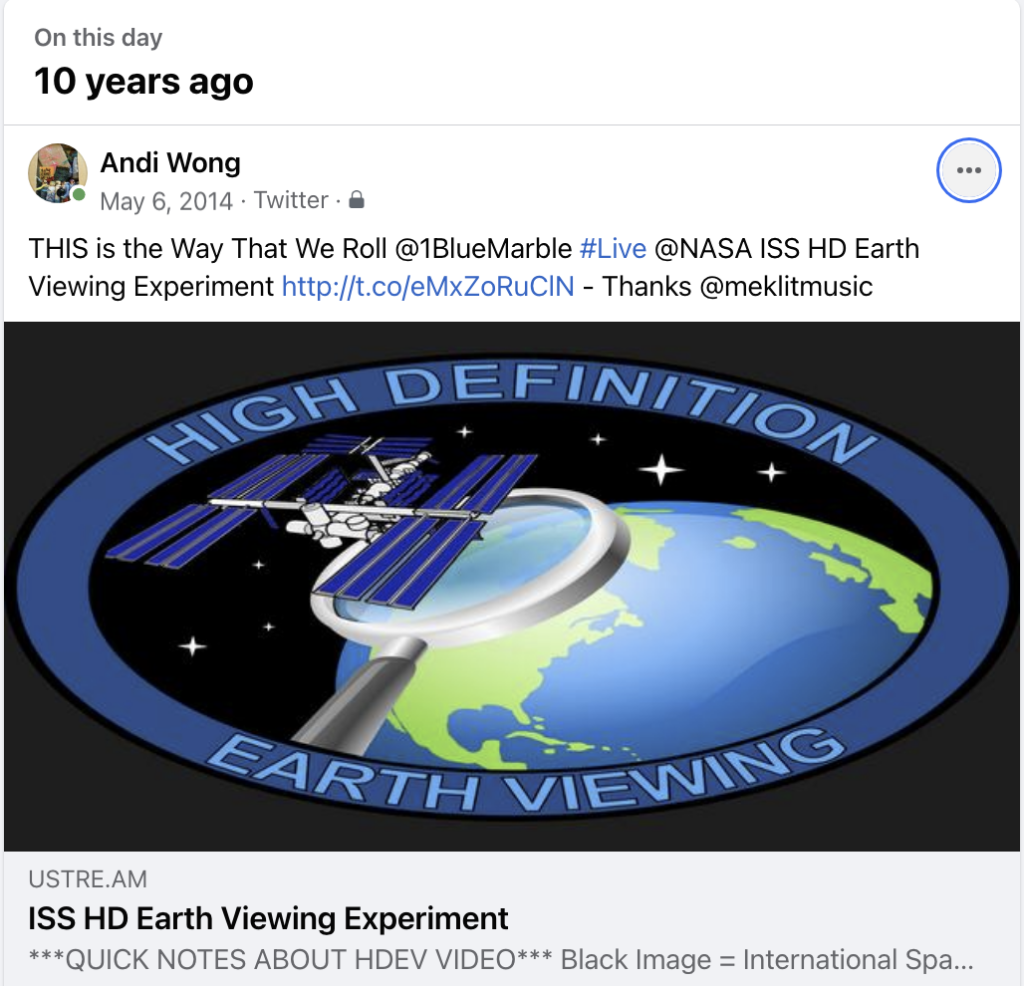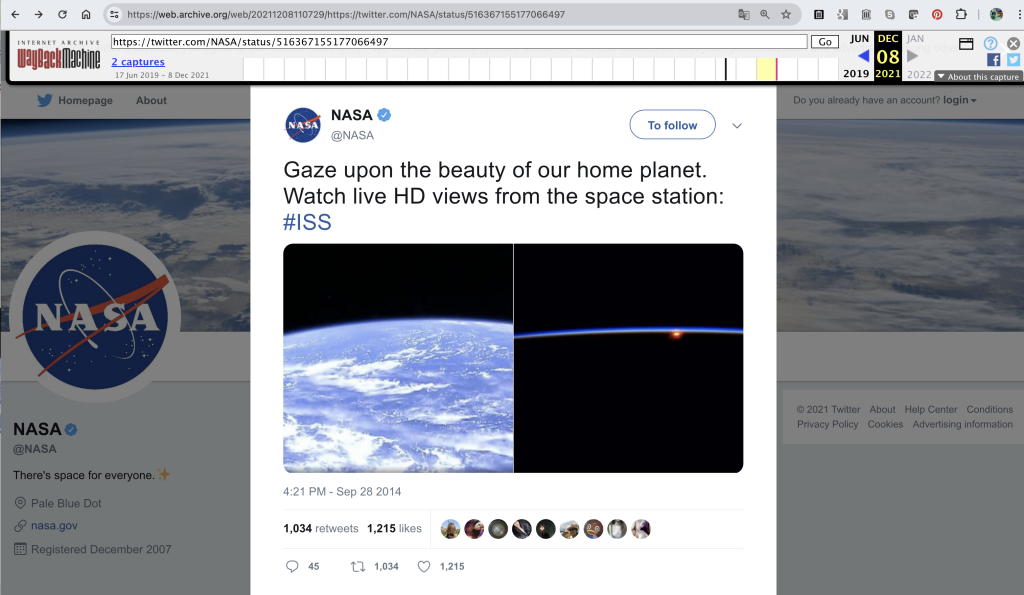NASA’s High Definition Earth Viewing (HDEV) Experiment, mounted on the ISS External Payload Facility of the European Space Agency’s Columbus module, was activated April 30, 2014 and after 5 years and 79 days was viewed by more than 318 million viewers across the globe on USTREAM alone.
This high definition video opens with a text passage from Carl Sagan’s 1994 book, “Pale Blue Dot.” “Consider again that dot. That’s here. That’s home. That’s us.”
A Look Back
Launched in 2014, NASA’s HDEV investigation conducted Earth observations using high definition video to provide broad area or panoramic views of how the Earth looks from the International Space Station. “We’ve always known that people are really excited and interested to see views of the Earth from space,” said William Stefanov, associate program scientist for Earth observations for the space station. “To know that there is this human connection; this is a view that is not coming from a robotic satellite, it’s actually coming from a spaceship that has people on it. I think that resonates with people.” In addition, students helped to design some of the cameras’ components, and the public viewed the camera feeds streaming live online.
After HDEV stopped sending any data on July 18, 2019, it was declared, on August 22, 2019, to have reached its end of life. The High Definition Earth Viewing (HDEV) experiment mounted on the ISS External Payload Facility of the European Space Agency’s Columbus module was activated April 30, 2014 and after 5 years and 79 days was viewed by more than 318 million viewers across the globe on USTREAM (now IBM Video) alone.
“The decision to make HDEV’s streaming video of Earth available to the global public while monitoring the primary objective had a large impact to HDEV’s additional success as a payload. The live streaming video expanded HDEV’s contributions to NASA and the Space Station Program in the areas of education and public awareness across diverse audiences. HDEV’s video served as a catalyst for students to learn about the Earth and remote sensing such as with the Columbus Eye program by the University of Bonn, Germany. It expanded the public’s awareness of the station orbiting the Earth including the invention of a commercially marketed device, ISS-Above, which indicates when the station passes overhead and shows the HDEV video, in addition to other space station downlinked video, HDEV created awe in those watching the Earth from space, and provided imagery for numerous creative uses including art installations, music videos, quilt squares, and developing educational material for Science, Technology, Engineering, Arts, and Math (STEAM) engagement with learners of all ages.”
High Definition Earth Viewing (HDEV) Final Report, June 2020
iStream, Ustream
A decade has passed since we learned about HDEV Earth Viewing Experiment from Ethiopian-born singer Meklit Hadero.

In 2016, Variety posted the news: “IBM Acquires Ustream for Up to $150 Million, Powering Into Live-Streaming Video. Ustream customers include Facebook, HBO, Discovery Channel and Sony.” In 2024, the old HDEV USTREAM url is up for purchase, but you can find more archival footage on the IBM Video Streaming website.

Live High-Definition Views from the International Space Station (Official NASA Stream)
Currently, live views from the ISS are streaming from an external camera mounted on the ISS module called Node 2. Node 2 is located on the forward part of the ISS. The camera is looking forward at an angle so that the International Docking Adapter 2 (IDA2) is visible. If the Node 2 camera is not available due to operational considerations for a longer period of time, a continuous loop of recorded HDEV imagery will be displayed. The loop will have “Previously Recorded” on the image to distinguish it from the live stream from the Node 2 camera.
